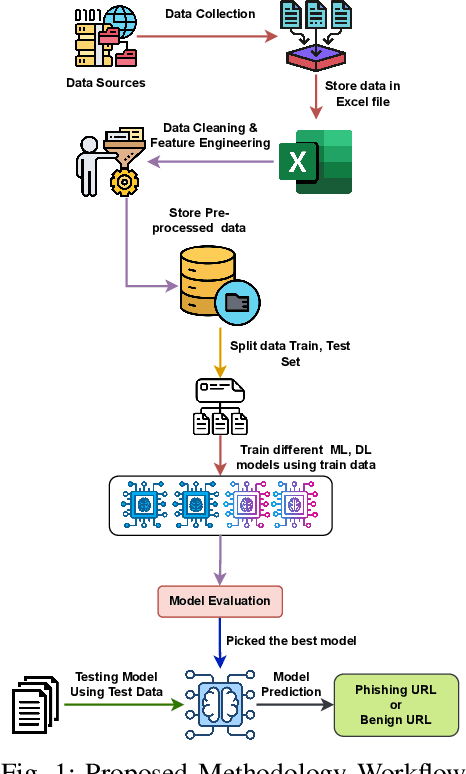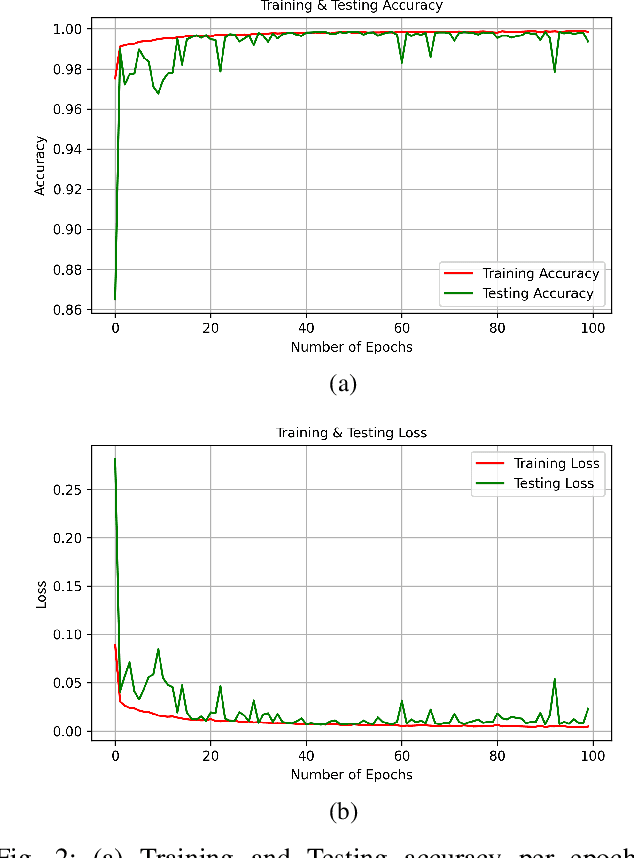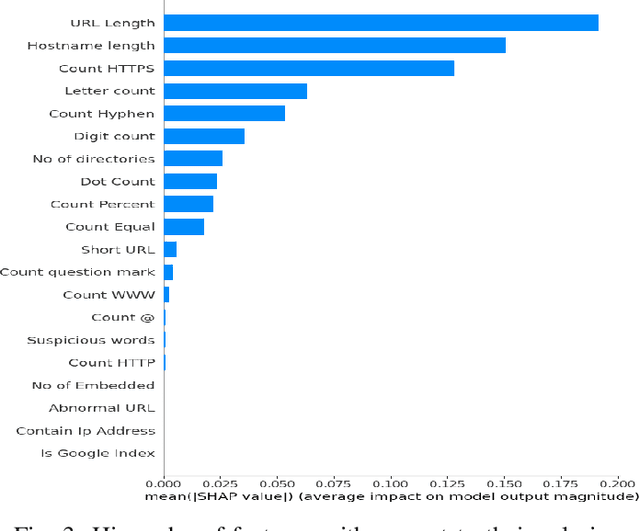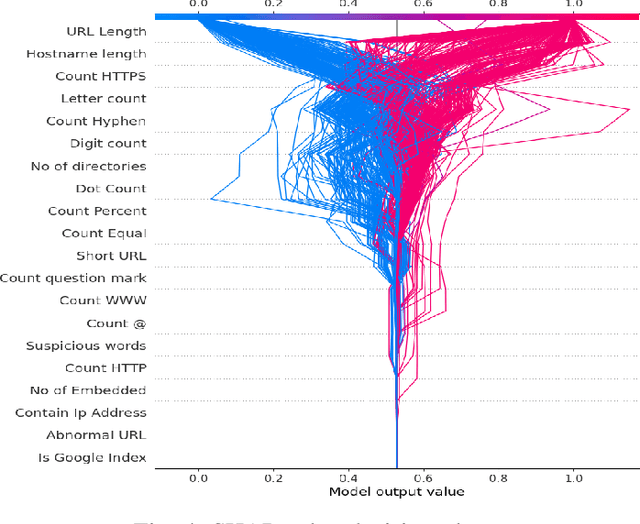Al Amin
AI-Driven Secure Data Sharing: A Trustworthy and Privacy-Preserving Approach
Jan 26, 2025



Abstract:In the era of data-driven decision-making, ensuring the privacy and security of shared data is paramount across various domains. Applying existing deep neural networks (DNNs) to encrypted data is critical and often compromises performance, security, and computational overhead. To address these limitations, this research introduces a secure framework consisting of a learnable encryption method based on the block-pixel operation to encrypt the data and subsequently integrate it with the Vision Transformer (ViT). The proposed framework ensures data privacy and security by creating unique scrambling patterns per key, providing robust performance against adversarial attacks without compromising computational efficiency and data integrity. The framework was tested on sensitive medical datasets to validate its efficacy, proving its ability to handle highly confidential information securely. The suggested framework was validated with a 94\% success rate after extensive testing on real-world datasets, such as MRI brain tumors and histological scans of lung and colon cancers. Additionally, the framework was tested under diverse adversarial attempts against secure data sharing with optimum performance and demonstrated its effectiveness in various threat scenarios. These comprehensive analyses underscore its robustness, making it a trustworthy solution for secure data sharing in critical applications.
ViT Enhanced Privacy-Preserving Secure Medical Data Sharing and Classification
Nov 08, 2024


Abstract:Privacy-preserving and secure data sharing are critical for medical image analysis while maintaining accuracy and minimizing computational overhead are also crucial. Applying existing deep neural networks (DNNs) to encrypted medical data is not always easy and often compromises performance and security. To address these limitations, this research introduces a secure framework consisting of a learnable encryption method based on the block-pixel operation to encrypt the data and subsequently integrate it with the Vision Transformer (ViT). The proposed framework ensures data privacy and security by creating unique scrambling patterns per key, providing robust performance against leading bit attacks and minimum difference attacks.
Advancing Healthcare: Innovative ML Approaches for Improved Medical Imaging in Data-Constrained Environments
Oct 16, 2024



Abstract:Healthcare industries face challenges when experiencing rare diseases due to limited samples. Artificial Intelligence (AI) communities overcome this situation to create synthetic data which is an ethical and privacy issue in the medical domain. This research introduces the CAT-U-Net framework as a new approach to overcome these limitations, which enhances feature extraction from medical images without the need for large datasets. The proposed framework adds an extra concatenation layer with downsampling parts, thereby improving its ability to learn from limited data while maintaining patient privacy. To validate, the proposed framework's robustness, different medical conditioning datasets were utilized including COVID-19, brain tumors, and wrist fractures. The framework achieved nearly 98% reconstruction accuracy, with a Dice coefficient close to 0.946. The proposed CAT-U-Net has the potential to make a big difference in medical image diagnostics in settings with limited data.
Enhancing Bangla Language Next Word Prediction and Sentence Completion through Extended RNN with Bi-LSTM Model On N-gram Language
May 03, 2024



Abstract:Texting stands out as the most prominent form of communication worldwide. Individual spend significant amount of time writing whole texts to send emails or write something on social media, which is time consuming in this modern era. Word prediction and sentence completion will be suitable and appropriate in the Bangla language to make textual information easier and more convenient. This paper expands the scope of Bangla language processing by introducing a Bi-LSTM model that effectively handles Bangla next-word prediction and Bangla sentence generation, demonstrating its versatility and potential impact. We proposed a new Bi-LSTM model to predict a following word and complete a sentence. We constructed a corpus dataset from various news portals, including bdnews24, BBC News Bangla, and Prothom Alo. The proposed approach achieved superior results in word prediction, reaching 99\% accuracy for both 4-gram and 5-gram word predictions. Moreover, it demonstrated significant improvement over existing methods, achieving 35\%, 75\%, and 95\% accuracy for uni-gram, bi-gram, and tri-gram word prediction, respectively
Sentiment Polarity Analysis of Bangla Food Reviews Using Machine and Deep Learning Algorithms
May 03, 2024Abstract:The Internet has become an essential tool for people in the modern world. Humans, like all living organisms, have essential requirements for survival. These include access to atmospheric oxygen, potable water, protective shelter, and sustenance. The constant flux of the world is making our existence less complicated. A significant portion of the population utilizes online food ordering services to have meals delivered to their residences. Although there are numerous methods for ordering food, customers sometimes experience disappointment with the food they receive. Our endeavor was to establish a model that could determine if food is of good or poor quality. We compiled an extensive dataset of over 1484 online reviews from prominent food ordering platforms, including Food Panda and HungryNaki. Leveraging the collected data, a rigorous assessment of various deep learning and machine learning techniques was performed to determine the most accurate approach for predicting food quality. Out of all the algorithms evaluated, logistic regression emerged as the most accurate, achieving an impressive 90.91% accuracy. The review offers valuable insights that will guide the user in deciding whether or not to order the food.
PhishGuard: A Convolutional Neural Network Based Model for Detecting Phishing URLs with Explainability Analysis
Apr 27, 2024



Abstract:Cybersecurity is one of the global issues because of the extensive dependence on cyber systems of individuals, industries, and organizations. Among the cyber attacks, phishing is increasing tremendously and affecting the global economy. Therefore, this phenomenon highlights the vital need for enhancing user awareness and robust support at both individual and organizational levels. Phishing URL identification is the best way to address the problem. Various machine learning and deep learning methods have been proposed to automate the detection of phishing URLs. However, these approaches often need more convincing accuracy and rely on datasets consisting of limited samples. Furthermore, these black box intelligent models decision to detect suspicious URLs needs proper explanation to understand the features affecting the output. To address the issues, we propose a 1D Convolutional Neural Network (CNN) and trained the model with extensive features and a substantial amount of data. The proposed model outperforms existing works by attaining an accuracy of 99.85%. Additionally, our explainability analysis highlights certain features that significantly contribute to identifying the phishing URL.
Intelligent Railroad Grade Crossing: Leveraging Semantic Segmentation and Object Detection for Enhanced Safety
Mar 17, 2024Abstract:Crashes and delays at Railroad Highway Grade Crossings (RHGC), where highways and railroads intersect, pose significant safety concerns for the U.S. Federal Railroad Administration (FRA). Despite the critical importance of addressing accidents and traffic delays at highway-railroad intersections, there is a notable dearth of research on practical solutions for managing these issues. In response to this gap in the literature, our study introduces an intelligent system that leverages machine learning and computer vision techniques to enhance safety at Railroad Highway Grade crossings (RHGC). This research proposed a Non-Maximum Suppression (NMS)- based ensemble model that integrates a variety of YOLO variants, specifically YOLOv5S, YOLOv5M, and YOLOv5L, for grade-crossing object detection, utilizes segmentation techniques from the UNet architecture for detecting approaching rail at a grade crossing. Both methods are implemented on a Raspberry Pi. Moreover, the strategy employs high-definition cameras installed at the RHGC. This framework enables the system to monitor objects within the Region of Interest (ROI) at crossings, detect the approach of trains, and clear the crossing area before a train arrives. Regarding accuracy, precision, recall, and Intersection over Union (IoU), the proposed state-of-the-art NMS-based object detection ensemble model achieved 96% precision. In addition, the UNet segmentation model obtained a 98% IoU value. This automated railroad grade crossing system powered by artificial intelligence represents a promising solution for enhancing safety at highway-railroad intersections.
Empowering Healthcare through Privacy-Preserving MRI Analysis
Mar 14, 2024Abstract:In the healthcare domain, Magnetic Resonance Imaging (MRI) assumes a pivotal role, as it employs Artificial Intelligence (AI) and Machine Learning (ML) methodologies to extract invaluable insights from imaging data. Nonetheless, the imperative need for patient privacy poses significant challenges when collecting data from diverse healthcare sources. Consequently, the Deep Learning (DL) communities occasionally face difficulties detecting rare features. In this research endeavor, we introduce the Ensemble-Based Federated Learning (EBFL) Framework, an innovative solution tailored to address this challenge. The EBFL framework deviates from the conventional approach by emphasizing model features over sharing sensitive patient data. This unique methodology fosters a collaborative and privacy-conscious environment for healthcare institutions, empowering them to harness the capabilities of a centralized server for model refinement while upholding the utmost data privacy standards.Conversely, a robust ensemble architecture boasts potent feature extraction capabilities, distinguishing itself from a single DL model. This quality makes it remarkably dependable for MRI analysis. By harnessing our groundbreaking EBFL methodology, we have achieved remarkable precision in the classification of brain tumors, including glioma, meningioma, pituitary, and non-tumor instances, attaining a precision rate of 94% for the Global model and an impressive 96% for the Ensemble model. Our models underwent rigorous evaluation using conventional performance metrics such as Accuracy, Precision, Recall, and F1 Score. Integrating DL within the Federated Learning (FL) framework has yielded a methodology that offers precise and dependable diagnostics for detecting brain tumors.
An Explainable AI Framework for Artificial Intelligence of Medical Things
Mar 07, 2024Abstract:The healthcare industry has been revolutionized by the convergence of Artificial Intelligence of Medical Things (AIoMT), allowing advanced data-driven solutions to improve healthcare systems. With the increasing complexity of Artificial Intelligence (AI) models, the need for Explainable Artificial Intelligence (XAI) techniques become paramount, particularly in the medical domain, where transparent and interpretable decision-making becomes crucial. Therefore, in this work, we leverage a custom XAI framework, incorporating techniques such as Local Interpretable Model-Agnostic Explanations (LIME), SHapley Additive exPlanations (SHAP), and Gradient-weighted Class Activation Mapping (Grad-Cam), explicitly designed for the domain of AIoMT. The proposed framework enhances the effectiveness of strategic healthcare methods and aims to instill trust and promote understanding in AI-driven medical applications. Moreover, we utilize a majority voting technique that aggregates predictions from multiple convolutional neural networks (CNNs) and leverages their collective intelligence to make robust and accurate decisions in the healthcare system. Building upon this decision-making process, we apply the XAI framework to brain tumor detection as a use case demonstrating accurate and transparent diagnosis. Evaluation results underscore the exceptional performance of the XAI framework, achieving high precision, recall, and F1 scores with a training accuracy of 99% and a validation accuracy of 98%. Combining advanced XAI techniques with ensemble-based deep-learning (DL) methodologies allows for precise and reliable brain tumor diagnoses as an application of AIoMT.
 Add to Chrome
Add to Chrome Add to Firefox
Add to Firefox Add to Edge
Add to Edge